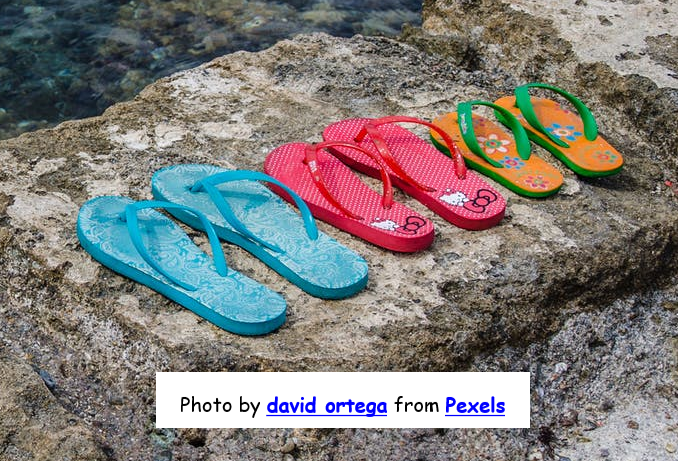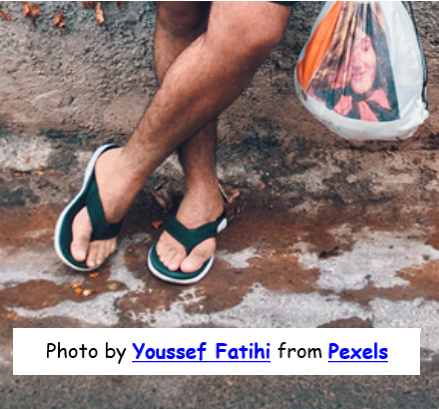Why do my Legs Feet hurt after wearing flip-flops?
Flip-flops: If you are reading this, you have probably wondering why have your feet hurt in flip-flops?
Let us tell you why and give you the best alternative options.
If you are unsure of what flip-flops are, they are a sandal-like foot protection that can have a thin rubber sole and a V-shaped strap that goes from in between the toes to either side of the foot.
The main issue is that flip-flops provide little or no support and stability for your feet. A lot of people walk around in flip-flops….so why aren’t they all in pain? For pain to occur a number of factors need to contribute and wearing poor footwear is just one component. Others include having poor foot structure like fallen arches, standing on unforgiving surfaces, increasing age, increased body weight and longer time spent standing on your feet.
Modern life has changed the environment that our bodies interact with, causing muscles of the back of the legs to shorten is very common. When the calf muscles are tight, causing the Achilles tendon to become taut earlier than the heel is ready to lift off to start the next step.
Hamstring tightness is amplified by being flatfooted; this can be the single biggest drawback to thin soled flip-flops. An elevated heel – 10mm or more – can improve comfort and reduce fatigue if you are one of the 50% of the population whose feet aren’t mechanically great. The same goes with flat, fashion sneaker styles and shoes like ballet flats. Sport shoes that offer a ‘barefoot’ experience can cause discomfort in your feet, legs and body unless your feet mechanics are correct.
You do not have to be exercising to be putting high amounts of force through your feet. It maybe that you stand at work all day or like to hit the shops in your flip-flops. Very flat, unsupportive shoes contribute to the muscles, tendons and ligaments in the foot overworking and becoming strained. It is becoming common to see clients who have regularly warn flip-flops or other very flat shoes suffering with pain in their heels, arches, ball of the foot, shins, achilles tendon and knees. Specifically, you may have heard of plantar fasciitis and Achilles’ tendonitis. It has been noticed over the years that problems we used to see in people in their 40s and 50s are now happening to those in their 20s and 30s. Sometimes it is brought on by a new job with higher demands placed on the feet, or a simple thing like moving from wooden or carpeted floors to harder areas for example tiles or concrete.
Knowing the ‘bad stuff’ regarding flip-flops may not stop you from wearing them. It is recommended to choose a supportive, orthotic style flip-flops. It should have a sturdy sole of adequate thickness to protect the bottoms of your feet and help absorb shock. A supportive thong should also only bend at the spot where your foot bends naturally. It is also important that there is a built in arch support and soft straps to reduce the likelihood of blisters occurring.
it is important not forget that the rear part of the thong (or any other shoe) should be around 8 mm thicker than the front if your feet are not perfect or if you tend to get tight calf, Achilles’ tendon or hamstrings.
If you already have pain, you are better off having a professional massage therapist assess you early. Letting acute pain become a chronic problem can make it more difficult to treat in the long term.



